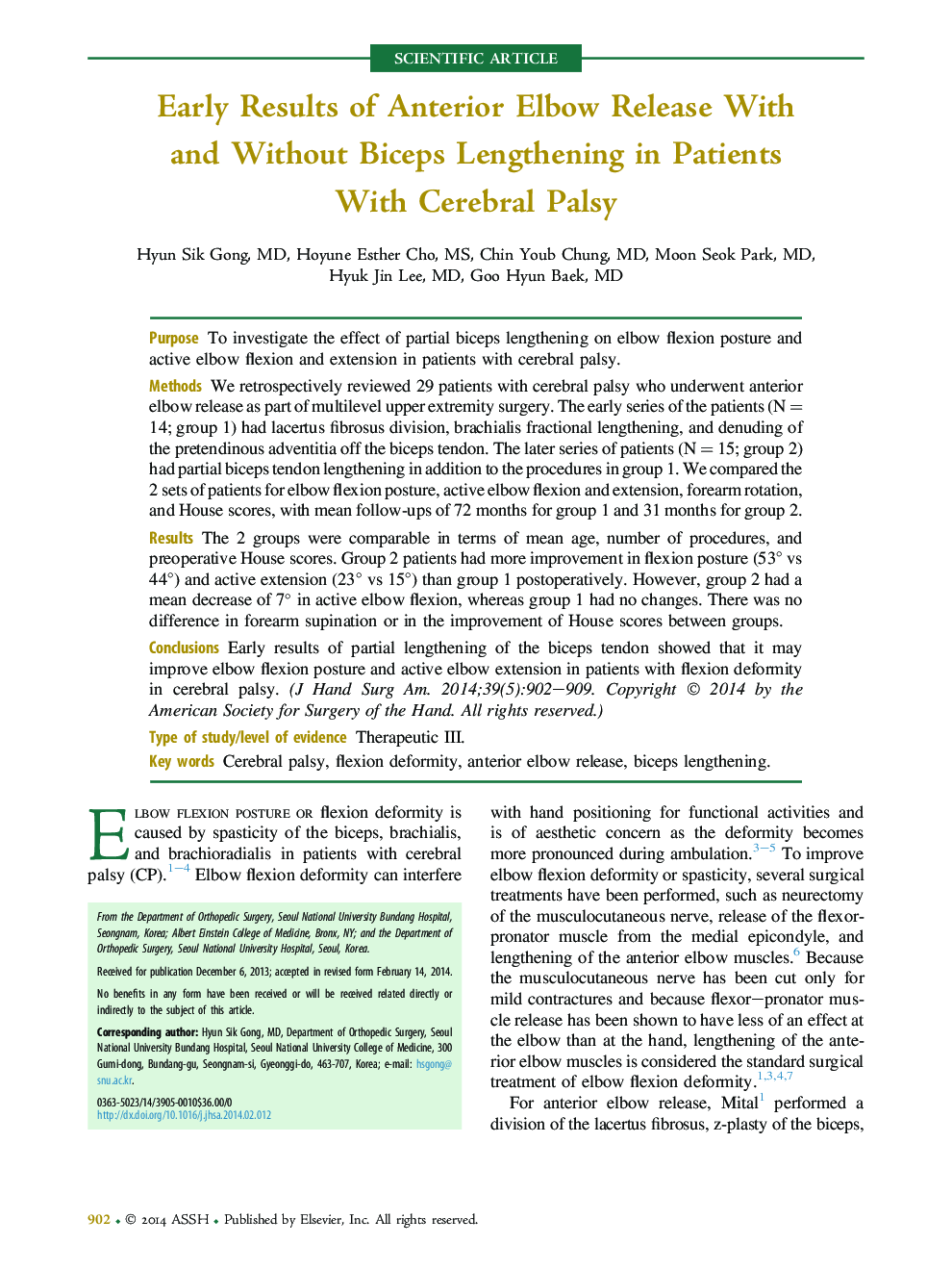| Article ID | Journal | Published Year | Pages | File Type |
|---|---|---|---|---|
| 4067344 | The Journal of Hand Surgery | 2014 | 8 Pages |
PurposeTo investigate the effect of partial biceps lengthening on elbow flexion posture and active elbow flexion and extension in patients with cerebral palsy.MethodsWe retrospectively reviewed 29 patients with cerebral palsy who underwent anterior elbow release as part of multilevel upper extremity surgery. The early series of the patients (N = 14; group 1) had lacertus fibrosus division, brachialis fractional lengthening, and denuding of the pretendinous adventitia off the biceps tendon. The later series of patients (N = 15; group 2) had partial biceps tendon lengthening in addition to the procedures in group 1. We compared the 2 sets of patients for elbow flexion posture, active elbow flexion and extension, forearm rotation, and House scores, with mean follow-ups of 72 months for group 1 and 31 months for group 2.ResultsThe 2 groups were comparable in terms of mean age, number of procedures, and preoperative House scores. Group 2 patients had more improvement in flexion posture (53° vs 44°) and active extension (23° vs 15°) than group 1 postoperatively. However, group 2 had a mean decrease of 7° in active elbow flexion, whereas group 1 had no changes. There was no difference in forearm supination or in the improvement of House scores between groups.ConclusionsEarly results of partial lengthening of the biceps tendon showed that it may improve elbow flexion posture and active elbow extension in patients with flexion deformity in cerebral palsy.Type of study/level of evidenceTherapeutic III.
